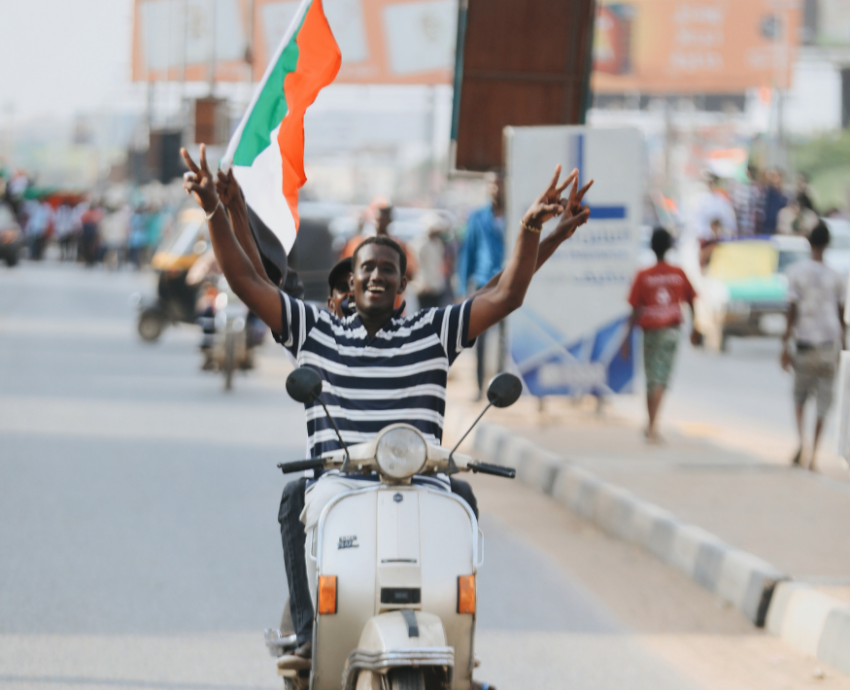
The Sudanese military, led by General Abdel Fattah al-Burhan, launched a coup on October 25 last year, deposing the transitional power-sharing government established after the mass movement that ended the 30-year dictatorship of Omar al-Bashir.
The transitional government (known as the Sovereignty Council) was the outcome of an uneasy agreement between elements of the old regime in the army — known as the Transitional Military Council (TMC) — and the democracy movement represented by the Forces of Freedom and Change (FFC).
The first civilian members of the government, including Prime Minister Abdullah Hamdok, were mostly technocrats with no base in the democracy movement, selected to avoid political tensions between different groups while placating both the masses and the military.
So compromised was this arrangement that important sections of the movement, including the Sudanese Communist Party (SCP), refused to participate in the government — while defending the civilian administrators against sabotage by the military.
However, even this formula was unacceptable to the military.
Khalid Hassan is a Sudanese activist living in Australia, founder of the Perth-based Sudanese community organisation the Democratic Consciousness Forum, and long-time member of the SCP. He told Green Left: “The TMC wanted to be the real decision-maker, and constantly used its control of the army and police to assert its influence over other ministries.
“The civilian administrators were trying to gradually replace senior public servants from the Bashir era and they took a lead in international relations. The army wanted to put a stop to this.
“It was also planned that the position of President would be transferred to a civilian in January. While this role does not have a lot of power, the military was worried about the symbolism of it. For al-Burhan, it was important to launch the coup before that happened.”
As dissatisfaction with the transitional government mounted within the FFC and tensions grew, the military arrested Hamdok and other ministers on October 25, sparking mass protests. Under international pressure, the military reinstated Hamdok in November, but the FFC refused to recognise the new administration.
Lacking a base of support, Hamdok resigned in January, following the shooting of two protesters by the military. With no prime minister and no transitional arrangement, Sudan is now effectively ruled by two competing and irreconcilable centres of power: the military and the grassroots democracy movement.
According to Hassan, the democracy movement is even stronger than it was during the 2019 uprising. This has prevented the old regime from subverting it with cosmetic changes, such as replacing the old dictator with a new strongman — as happened in Egypt or Algeria.
“Yes, people are frustrated that change hasn’t gone further," Hassan said. "But still the revolution is more organised than ever and its support is growing. As [the movement] increases the pressure on the old regime, it makes more mistakes — which deepens people's understanding.”
Across the country, the organisational backbone of the democracy movement is the network of neighbourhood groups known as Resistance Committees. In a demonstration of their real power, in the north they were able to completely block the highway linking Sudan to Egypt for more than a month in response to the Egyptian government’s support for the coup.
Through a process known as the Charter for the Establishment of the People’s Authority, the Coordination of Resistance Committees launched a nationwide community consultation on February 27 to establish a comprehensive program for government in which the military is to play no role.
“Every single committee in every village and every suburb is discussing the political and economic content of the charter. These committees don’t have permanent representatives, instead they elect someone to speak on their behalf when they need to contribute to the national process. As you can imagine, this is taking a long time. But it’s a strategic necessity, if we are going to win. I think it’s one of the things that was missing.”
Hassan said this makes the Sudanese revolution different to the Arab Spring, which produced uprisings but no alternative plans for people’s power. “People in their communities are coming up with ideas about how they want the new government to be formed," he said.
"It is very much a bottom up process. An important proposal is that democracy should begin at the local level, with local elections forming bodies that choose regional and national bodies.”
At the same time, the military is trying to form a government drawing on elements of the old regime. Many government services like schools and hospitals are continuing to function, but on the ground the people that work in them are not taking their orders from al-Burhan.
According to Hassan, the inability of the military to assert control is partly because the old regime has quite a small social base, particularly among youth. While those people benefitted from the dictatorship’s patronage network, they are not prepared to take to the streets to support it.
Despite the savage violence unleashed on unarmed protesters by the al-Bashir dictatorship in 2019, the movement continued. To this day, it has very deliberately avoided armed struggle.
“People put pressure on the TMC and keep the army at bay with constant demonstrations and sit-ins. They are very determined and courageous. Unarmed people block the military day after day without fear. A few protesters get killed every time, but they hold their ground and the movement grows in strength. On some occasions, the regime has even abandoned police stations, leaving weapons behind in the hope of provoking armed conflict, but still the movement remains totally peaceful.”
For Hassan, the most extraordinary aspect about the process is the transformation in consciousness and confidence of the general population. “The people you see on the streets, particularly the young people, are leaders," he said. "They are discussing the program for government, the place of women in society, economics, theories of social change and much more. They are doing it in their thousands.”